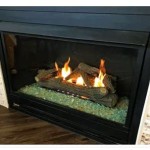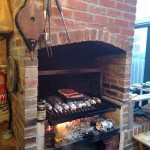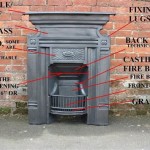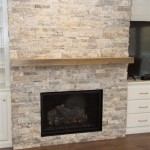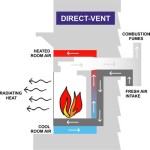How To Install a TV Wall Mount on a Stone Fireplace
Mounting a television above a stone fireplace can significantly enhance the aesthetic appeal of a living space, creating a focal point for entertainment. However, this project presents unique challenges compared to mounting on drywall or wood-framed walls. The hard, potentially brittle nature of the stone, combined with the need to conceal wires and manage heat from the fireplace, requires careful planning and execution. This article provides a comprehensive guide on how to safely and effectively install a TV wall mount on a stone fireplace, considering both structural integrity and aesthetic considerations.
Before commencing the installation, it's crucial to assess the feasibility of the project. Several factors should be considered, including the type of stone, the condition of the mortar joints, the weight of the television, and the local building codes. An inadequate assessment can lead to structural damage, TV instability, or even personal injury. Therefore, thorough preparation is paramount.
Initially, the type of stone composing the fireplace needs to be identified. Common types include natural stone such as granite, marble, limestone, and slate, as well as manufactured stone veneer. Each type possesses varying degrees of hardness and density, influencing the selection of appropriate drilling techniques and anchor types. Additionally, the condition of the mortar joints should be inspected. Cracks, crumbling, or weakened mortar can compromise the stability of the mount. If the mortar is in poor condition, it may need to be repaired or replaced before proceeding.
The weight of the television is another critical factor. The wall mount must be rated to support the TV's weight, with a safety margin built in. Exceeding the weight limit can cause the mount to fail, resulting in damage to the TV and the fireplace. Furthermore, the size of the TV needs to be considered in relation to the fireplace dimensions. A disproportionately large TV can overwhelm the fireplace, detracting from the overall aesthetic. It’s also advisable to consider the viewing angle from the typical seating position. A TV mounted too high can cause neck strain during extended viewing.
Lastly, it is vital to consult local building codes and regulations. Some municipalities may have restrictions on mounting TVs above fireplaces, particularly regarding fire safety and structural modifications. Obtaining necessary permits and adhering to code requirements ensures compliance and avoids potential penalties.
Key Point 1: Selecting the Right Materials and Tools
The success of a TV wall mount installation on a stone fireplace hinges on the selection of appropriate materials and tools. Using the wrong tools or anchors can result in ineffective mounting, damage to the stone, or even injury. This section outlines the essential items needed for a successful project.
First, the wall mount itself must be chosen based on the TV's weight, size, and desired viewing angle. Options include fixed mounts, tilting mounts, and full-motion mounts. Fixed mounts are the simplest and most secure, ideal for situations where the viewing angle doesn't need to be adjusted. Tilting mounts allow for slight vertical adjustments, reducing glare. Full-motion mounts offer the greatest flexibility, allowing the TV to be extended, swiveled, and tilted for optimal viewing from various positions in the room. The selected mount must be specifically designed for use with stone or masonry surfaces, and it must include appropriate mounting hardware.
Next, selecting the proper anchors is critical. Standard drywall anchors are unsuitable for stone fireplaces. Instead, masonry anchors designed for use in concrete, brick, or stone are required. Options include sleeve anchors, wedge anchors, and concrete screws. Sleeve anchors provide a strong hold by expanding within the drilled hole. Wedge anchors are suitable for heavier loads and applications where vibration is a concern. Concrete screws are relatively easy to install and provide a secure hold in solid stone. The choice of anchor depends on the type of stone, the weight of the TV, and the manufacturer's recommendations for the wall mount.
In addition to the wall mount and anchors, several specialized tools are necessary. A rotary hammer drill with masonry drill bits is essential for creating precise holes in the stone. A standard drill is insufficient for this task, as it lacks the necessary impact force to penetrate the hard surface. The drill bits should be carbide-tipped and specifically designed for drilling through stone. It is recommended to have a range of drill bit sizes to accommodate different anchor sizes. Eye protection and a dust mask are crucial for safety when drilling into stone, as the process generates significant dust and debris. A stud finder is generally not required for stone fireplaces, as the entire surface is solid. A level is essential for ensuring that the mount is installed straight and plumb. A measuring tape is needed for accurate positioning of the mount and determining the spacing between the mounting holes. A socket wrench or adjustable wrench is required for tightening the anchor bolts. Finally, a wire fish tape or flexible conduit is helpful for routing cables behind the fireplace.
Key Point 2: The Installation Process: A Step-by-Step Guide
Once the preliminary assessments are completed and the necessary materials and tools are gathered, the installation process can begin. This section provides a detailed, step-by-step guide to safely and effectively mounting a TV on a stone fireplace.
The initial step involves accurately determining the desired location for the TV. This should be based on factors such as viewing distance, viewing angle, and the overall aesthetic of the room. Use a measuring tape to mark the exact center point of the desired location on the stone fireplace. This point will serve as a reference for positioning the wall mount. Use a level to ensure that the mark is perfectly horizontal.
Next, position the wall mount bracket against the stone fireplace, aligning it with the marked center point. Use a pencil to mark the locations of the mounting holes on the stone. Ensure that the mounting holes are evenly spaced and aligned with the mortar joints, if possible. Drilling into mortar joints can be easier and less damaging to the stone itself. Double-check the measurements and alignment before proceeding to the next step.
Using the rotary hammer drill with the appropriate size masonry drill bit, carefully drill pilot holes at each marked location. Start by applying gentle pressure and gradually increase the force as the drill penetrates the stone. Avoid applying excessive pressure, as this can cause the drill bit to overheat or break. Drill the holes to the depth recommended by the anchor manufacturer. Clean out the dust and debris from the drilled holes using a vacuum cleaner or compressed air. This will ensure a secure fit for the anchors.
Insert the masonry anchors into the drilled holes. Depending on the type of anchor, this may involve hammering them into place or threading them into the holes. Ensure that the anchors are fully seated and flush with the surface of the stone. Attach the wall mount bracket to the stone fireplace using the appropriate bolts or screws. Tighten the bolts or screws securely using a socket wrench or adjustable wrench. Avoid over-tightening, as this can damage the anchors or the stone. Double-check the stability of the mount by applying gentle pressure to it. It should be firmly secured to the stone.
Now, attach the mounting brackets to the back of the television, following the manufacturer's instructions. Ensure that the brackets are properly aligned and securely fastened. Lift the television and carefully align the mounting brackets with the wall mount bracket. Secure the television to the wall mount bracket using the appropriate hardware, according to the manufacturer's instructions. Double-check that all connections are tight and secure. Gently test the stability of the television by applying light pressure to it. Ensure the television is securely mounted and cannot be easily dislodged.
Key Point 3: Wire Management and Heat Considerations
Beyond the structural integrity of the installation, managing the television's wires and addressing potential heat from the fireplace are crucial aspects of mounting a TV above a stone fireplace. Inadequate wire management can create an unsightly appearance, while failure to address heat concerns can damage the television.
Effective wire management involves concealing the power cord, HDMI cables, and any other necessary connections. Several options are available for achieving this, including running the wires behind the fireplace, using a wire concealer, or hiring a professional electrician to install an electrical outlet behind the TV. Running wires behind the fireplace requires careful planning and execution. A wire fish tape or flexible conduit can be used to guide the wires through the wall cavity. Be sure to check for any obstructions, such as insulation or framing members, before attempting to run the wires. Using a wire concealer involves installing a plastic channel or cover over the wires to hide them from view. Wire concealers are available in various sizes and colors to match the surrounding decor. Hiring an electrician to install an electrical outlet behind the TV is the most professional and aesthetically pleasing solution. However, it is also the most expensive option. The electrician can also install a recessed cable box to further conceal the wires.
Addressing heat concerns is paramount, as excessive heat can damage the television's internal components and shorten its lifespan. The primary source of heat is the fireplace itself, particularly if it is a wood-burning fireplace. Gas fireplaces also generate heat, although typically less than wood-burning fireplaces. To mitigate heat risks, consider several strategies. Maintain a safe distance between the top of the fireplace and the bottom of the television. A minimum distance of 12 inches is generally recommended, but this may vary depending on the type of fireplace and the TV manufacturer's recommendations. Install a heat shield above the fireplace to deflect heat away from the television. Heat shields are typically made of metal and can be custom-fabricated to fit the specific fireplace. Use a full-motion mount that allows the television to be extended away from the wall when the fireplace is in use. This will increase the distance between the TV and the heat source. Monitor the temperature above the fireplace when it is in use. If the temperature becomes excessively high, consider limiting the use of the fireplace or taking additional measures to protect the television.
By carefully considering these factors and following the steps outlined above, individuals can successfully install a TV wall mount on a stone fireplace. This process is not without its challenges, and if any doubts arise regarding one's ability to complete the task safely and effectively, consulting a professional installer is always advisable.

Mounting A Tv Above Fireplace With Full Tutorial Fixthisbuildthat

Installing A Tv Wall Mount On Stone Fireplace Lhp

Mounting A Tv Above Fireplace With Full Tutorial Fixthisbuildthat

How To Mount Tv On Uneven Stone Fireplace Wall Rock Fireplaces

Smarthome And Theater Systems Residential Solutions Photo Album Tv Mount Over Stone Fireplace In New Canaan Ct

Installing A Tv On Stacked Stone Wall

Made How To Mount A Flat Screen Tv On Stone Fireplace Diy

Mounting Tv Over Stone Fireplace Kouland Technology Inc

Natural Stone Fireplaces With Wall Mount Television Design Ideas

How To Mount Tv On Stone Fireplace Installation Guide
Related Posts


